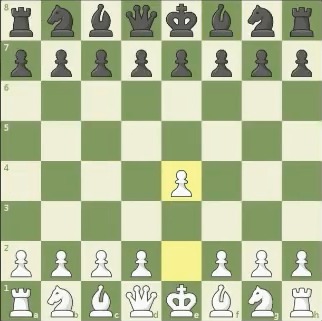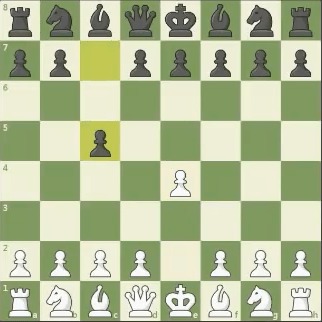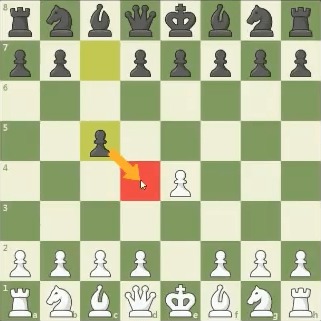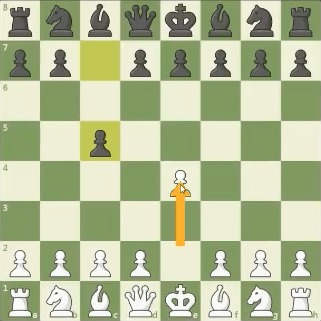Chess openings refer to the first several moves made in any given chess game, and take it from an international master — those moves matter. I recently had the pleasure of co-hosting Chess TV’s Amateur Hour with IM Danny Rensch, during which Danny provided me with a mind-blowing explanation that clarified the fundamentals behind chess opening moves.
In this article, I’ll use the information I got from Danny to explain what every good opening has in common and the top keys principles that make a good position in chess so you can start to win more games.
This article is written by an amateur, but the content inside comes directly from an international master. If you’re an amateur like me, I hope this article is more helpful than the others you’ll read, because it’s written by someone who’s learning these concepts for the very first time. None of the information inside this article is my opinion — it’s solid, fundamental knowledge taught to me by IM Danny Rensch.
We’ll Focus On Why These Chess Opening Moves Are Played — Not Just Memorization
Lots of amateurs, myself included, have memorized the first few most popular opening moves in chess (e4 or d4 for white, e5 or c5 for black), but we don’t know why we play them. It’s OK if you haven’t memorized any moves at all!
Almost every other article focuses on what opening moves to make, but memorizing moves wasn’t helping me to improve my chess game because I didn’t understand the underlying concepts.
This article will focus on the strategies that apply to all good chess opening moves. Whether you’re playing a game with a friend or analyzing one of Magnus Carlsen’s games (the current world champion), you’ll begin to understand why they’re playing the opening moves they are — not just how to copy them.
The Basic Chess Opening Strategy I Never Learned
Danny said, “Even when top players play an opening you don’t know, they do things you were taught to do in the beginning of chess.” (I had never been taught these things.)
Here are key things that masters often do in openings:
- They bring out their pieces to fight for control over the middle of the board. Regardless of the opening that’s played, that’s a theme that almost never changes.
- The method, or the way they want to control the center is what changes.
- Tip: If someone starts to play a series of weird moves to start a game, you should just grab control over the middle of the board and “own everything.”
Chess Opening Moves Are Counterblows
When you’re thinking about chess openings, think of each move as a counterblow. Let’s walk through an example.
Why Black Plays c5 (The Sicilian Defense) After White Plays e4
- Someone plays e4, the most common opening move in chess.
- Black plays c5 in response. (Known as the Sicilian defense.)
- c5 is played because black is trying to attack the dark squares.
- That’s a logical thing to do, because white has overextended on the light squares, and that makes d4 weak.
- That’s why black responds with c5 or e5 after e4: to challenge an area of the board that is currently unchallenged.
There’s No Substitute For This One Thing
There’s no away around this: You have to learn some basic opening moves that are recommended by statistics and by what people have done previously.
How Do I Learn Basic Opening Moves?
A great way to do this is using the Opening Explorer on Chess.com! That way, you start building those “opening move muscles.” Danny said that if you do this, first you’ll realize you messed up in the first few moves, but before long it will be move 5, and then move 10.
In other words, learning basic opening moves helps you to make progress.
The Basic Core Concepts Of Every Chess Opening
- Whenever someone makes a move, you are gaining control and losing control over certain critical areas of the board.
- As a beginner, you want to begin to understand cause and effect in chess. It’s the chess version of the principle, “To every action is an equal and opposite reaction.”
- Every move should take advantage of either:
- Something that is vulnerable for the taking or less guarded than it should be
- Moving to where your pieces might have a chance to work together
Tools To Learn Better Openings
My favorite online tool for learning chess openings is Chess.com’s opening explorer, which is included with a premium membership to Chess.com.
I’d recommend reading my article about the right way to use Chess.com’s opening explorer before you dive in. To be honest, it confused the heck out of me at first. When I told IM Danny Rensch about how I had been using it, he said I had been thinking about it “exactly wrong.”
The advice he gave me on the air made things a lot clearer for me, and that’s why I decided to write an article about how to use it.
Good Openings Lead To Good Positions
If you haven’t already, read my follow-up article called 3 Keys To Getting Good Positions In Chess: How To Win For Beginners! to accelerate your learning process and start winning more games.
Closing Out This Article About Chess Openings
My goal as an amateur and aspiring chess student is to be able to clarify some fundamental concepts that should help anyone to improve their chess game. Keep these strategies about how to play solid chess opening moves in the forefront of your mind, and you’re sure to begin to improve your chess game. Feel free to challenge me to a game on Chess.com — my username is payetteforward, and share this article with your friends!





Great read! Very helpful.
Very good “article”! I almost didn’t realize I was reading a paid advertisement for http://www.chess.com premium membership… 🙂
You are really good at breaking things down that I talked about! I should take lessons from you! 🙂